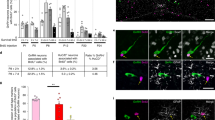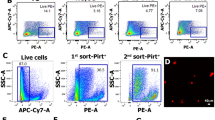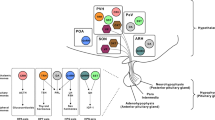Abstract
POSTERIOR pituitary hormone analogues have been known from the neural region of Ascidians for some time1,2, though doubt has been thrown on their reality3. One investigator only seems to have looked for anterior pituitary hormones4; he examined an extract from the neural region (ganglion + neural gland + ciliated pit) of Polycarpa for gonadotrophically active substance. Unfortunately, as he admitted himself, he had not sufficient material for an adequate test, so his results remained inconclusive and have not been generally accepted. In the course of other investigations I have had occasion to repeat this work using two other Ascidians, Ciona intestinalis (L.) and Phallusia mammilata (Cuv.).
This is a preview of subscription content, access via your institution
Access options
Subscribe to this journal
Receive 51 print issues and online access
$199.00 per year
only $3.90 per issue
Buy this article
- Purchase on SpringerLink
- Instant access to full article PDF
Prices may be subject to local taxes which are calculated during checkout
Similar content being viewed by others
References
Butcher, E. O., J. Exp. Zool., 57, 1 (1930).
Bacq, Z. M., and Florkin, M., Arch. Internat. Physiol., 40, 442 (1935).
Pérès, J. M., Ann. Inst. Oceanograph., 21, 229 (1943).
Hogg, B. M., Proc. Soc. Exp. Biol. Med., 35, 616 (1937).
Author information
Authors and Affiliations
Rights and permissions
About this article
Cite this article
CARLISLE, D. Gonadotrophin from the Neural Region of Ascidians. Nature 166, 737 (1950). https://doi.org/10.1038/166737a0
Issue date:
DOI: https://doi.org/10.1038/166737a0
This article is cited by
-
The neural gland in tunicates: fine structure and intracellular distribution of phosphatases
Zeitschrift f�r Zellforschung und Mikroskopische Anatomie (1971)
-
Origin of the Pituitary Body of Chordates
Nature (1953)



